
Dmitri Ivanovich Mendeleev was a Russian chemist and inventor. He is best known for formulating the Periodic Law and creating a version of the periodic table of elements. He used the Periodic Law not only to correct the then-accepted properties of some known elements, such as the valence and atomic weight of uranium, but also to predict the properties of three elements that were yet to be discovered.

Heat treating is a group of industrial, thermal and metalworking processes used to alter the physical, and sometimes chemical, properties of a material. The most common application is metallurgical. Heat treatments are also used in the manufacture of many other materials, such as glass. Heat treatment involves the use of heating or chilling, normally to extreme temperatures, to achieve the desired result such as hardening or softening of a material. Heat treatment techniques include annealing, case hardening, precipitation strengthening, tempering, carburizing, normalizing and quenching. Although the term heat treatment applies only to processes where the heating and cooling are done for the specific purpose of altering properties intentionally, heating and cooling often occur incidentally during other manufacturing processes such as hot forming or welding.
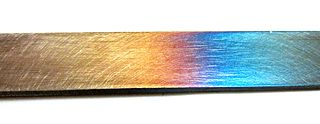
Tempering is a process of heat treating, which is used to increase the toughness of iron-based alloys. Tempering is usually performed after hardening, to reduce some of the excess hardness, and is done by heating the metal to some temperature below the critical point for a certain period of time, then allowing it to cool in still air. The exact temperature determines the amount of hardness removed, and depends on both the specific composition of the alloy and on the desired properties in the finished product. For instance, very hard tools are often tempered at low temperatures, while springs are tempered at much higher temperatures.

Sergey Konstantinovich Zaryanko was a Russian portrait painter and art teacher of Belarusian ancestry.

Kirill Yuryevich Lavrov was a Soviet and Russian stage and film actor and director. People's Artist of the USSR (1972), Hero of Socialist Labour (1985), Order of Lenin recipient (1985) and People's Artist of Ukraine (2003).
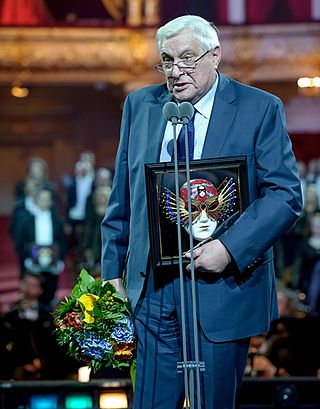
Oleg Valerianovich Basilashvili is a Soviet and Russian stage and film actor. He was awarded People's Artist of the USSR in 1984.
Dmitry Konstantinovich Girs (‹See Tfd›Russian: Дми́трий Константи́нович Гирс; was a Russian writer.

Yevgeni Aleksandrovich Chernov is a Russian football player who plays as a left-back for Rostov.
Chimera was a Russian underground rock band formed by singer/guitarist Edward Starkov and lead-guitarist Gennady Bachinsky in St. Petersburg in 1990. It was the main group of the club Tamtam, in which Korol i Shut and Tequilajazzz also performed. Chimera repeatedly gave concerts in Germany.

Dmitry Aleksandrovich Bogayev is a Russian former football player. He played as a right-back or right midfielder.
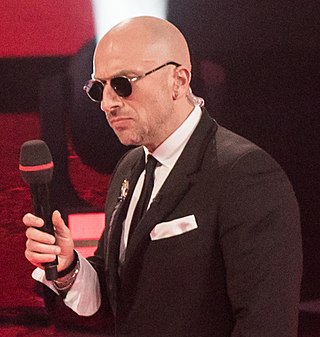
Dmitry Vladimirovich Nagiyev is a Russian actor, TV-host, musician, showman and radio host. In 1991, graduated from the Leningrad State Institute Of Theater, Music And Cinematography.
Dmitry Konstantinovich Faddeev was a Soviet mathematician.
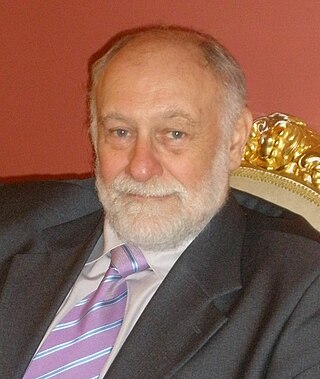
Yuri Vladimirovich Trushin is Russian physicist and professor of Theoretical Physics of semiconductors. He is a member of the Russian Academy of Natural Sciences, and has been recognized as an Honored Scientist of the Russian Federation.
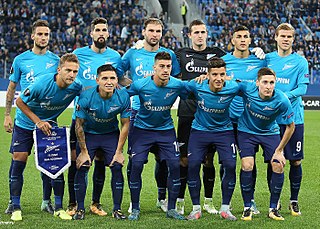
The 2017–18 Zenit Saint Petersburg season was the 93rd season in the club's history and its 22nd consecutive season in the Russian Premier League.

The Chernov House is a building in the Kirovsky City District of Rostov-on-Don, Russia. The house is located at 69 Bolshaya Sadovaya Street at the intersection of Voroshilovsky Prospekt and Bolshaya Sadovaya Street. It was a revenue house. The building has the status of an object of cultural heritage of Russia of regional significance.
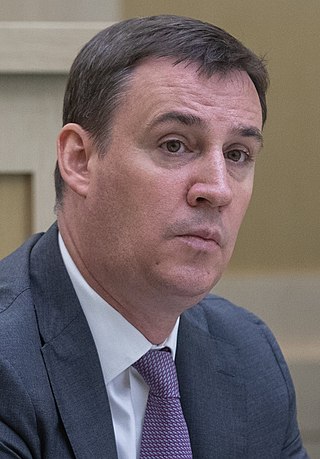
Dmitry Nikolayevich Patrushev is a Russian banker and politician serving as the deputy prime minister for agriculture since May 2024. He previously served as Minister of Agriculture of Russia from 2018 to 2024.
The 2018–19 FC Rostov season was the club's tenth successive season in the Russian Premier League, the highest tier of football in Russia. They finished the season 9th in the Premier League, and reached the Semifinal of the Russian Cup, where they lost to eventual winners Lokomotiv Moscow.

Mstyslav Andriiovych Chernov is a Ukrainian filmmaker, war correspondent, videographer, photographer, photojournalist, and novelist. A Pulitzer Prize and Academy Awards winner known for his coverage of the Revolution of Dignity, War in Donbas, the downing of flight MH17, Syrian civil war, Battle of Mosul in Iraq, and the 2022 Russian invasion of Ukraine, including the Siege of Mariupol.

Artur Chernov is a former Russian tennis player.
The 2021–22 season was the 64th season in the existence of PFC Krylia Sovetov Samara and the club's 19th consecutive season in the top flight of Russian football. In addition to the domestic league, PFC Krylia Sovetov Samara are participating in this season's editions of the Russian Cup.
















